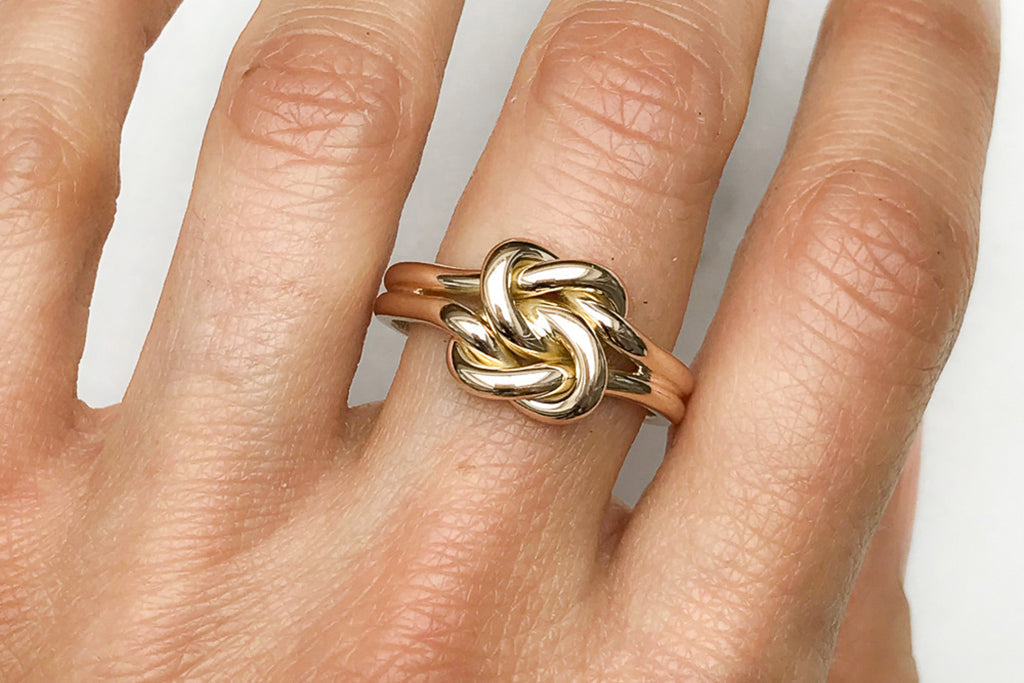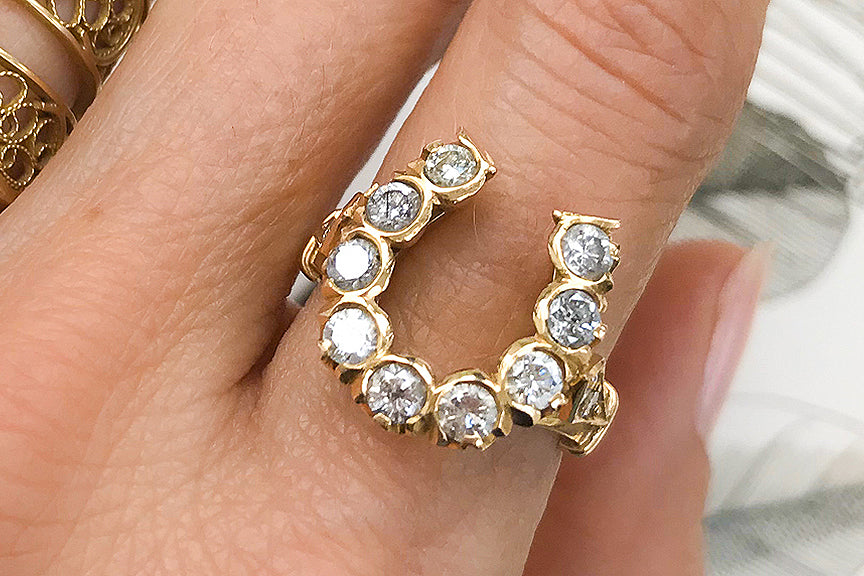
Lover's Knots: The Most Romantic Motif in Jewellery History
Of all the sentimental motifs in jewellery design, the lover’s knot is one of my favourites. An interlacing pattern with no discernible beginning representing the unbreakable bond between lovers, it communicates a simple but powerful message through an elegant, easy-to-wear motif. For the romantically inclined, it’s pretty much perfect.
The history of the lover's knot motif
Found in Celtic artwork, ancient Egyptian sculptures and ancient Greek jewellery, the association of knots with love has appeared in many different cultures throughout history. In the 19th century, sailors would wear a love knot bracelet woven out of rope as a reminder of their loved ones when they were away from home, which also acted as a talisman to keep them safe while at sea. Another legend tells the story of young lovers tying two small tree branches together to form a lover’s knot. If the knot stayed tied for a year, they were destined to be together.

Victorian lover's knot jewellery
By the time the Victorian era came around, the love knot was already well established as a symbol of love - one whose interwoven design joined people together for eternity. This romantic period of jewellery design saw sentimental motifs flourish, driven by Queen Victoria’s own love of jewellery imbued with meaning (her wedding ring from Albert featured a snake, representative of eternal love). The love knot, like the forget-me-not flower, the arrow and the swallow, became part of a language of love that found the perfect expression in jewels from this period.

The lover's knot: an enduring symbol of love
Love knots remain a classic motif in contemporary jewellery design, with everyone from Tiffany to Pandora, Graff to Georg Jensen, creating jewellery collections inspired by this classic symbol of love. Nothing beats a genuine antique from the Victorian era, however, and Matilda is one such exquisite example.
Made in 1893, the classic design features what is known as a true lover’s knot – a decorative knot comprised of two intertwined overhand knots, fashioned in 15-carat yellow gold.



